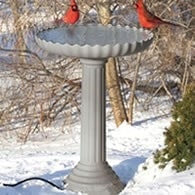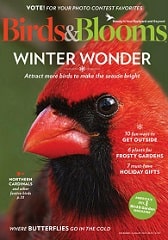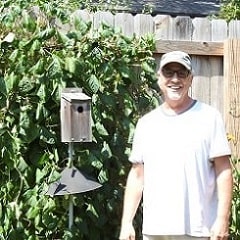Key Features That Differentiate House Finches and House Sparrows
The House Sparrow and House Finch are two species that are among the most common birds in human-inhabited areas, but their differences are more distinct than you might think.
Let's begin discovering how easily it can be to tell these two birds apart from each other.
Spotting the Red: Male House Finches
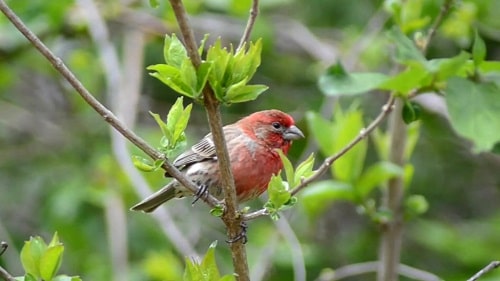
Male House Finch
The easiest way to identify a male House Finch is by looking for red plumage. Some people mistake him as a red-headed sparrow or red-headed wren, neither exist.
Males have bright red markings on their faces, breasts, and rumps. This red can vary in intensity based on diet, sometimes appearing orange or yellowish.
Sometimes this color can be so prominent as to confuse it with the Purple Finch.
Male House Sparrow
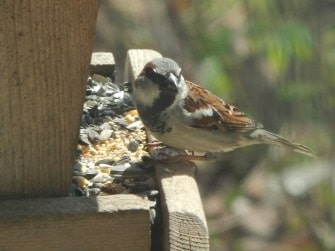
Male House Sparrow Notice Bibb under Beak
The male House Sparrow, on the other hand, has no red at all. Male House Sparrows feature gray crowns, black bibs under their chins, and white cheeks.
The back and wings are shades of brown, black, and gray, and the underparts are a pale gray-brown.
Understanding Female Finch Features
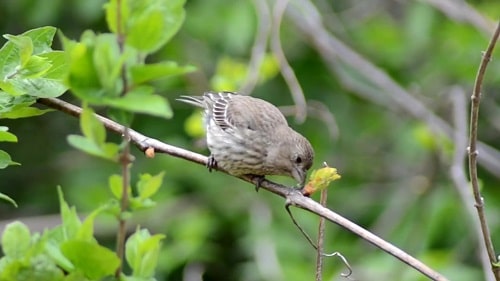
Female House Finch
Female House Finches are mostly brown with prominent streaks running down their belly and flanks. These streaks appear irregular and give them a textured look.
Their overall coloration is lighter compared to female House Sparrows, with a softer and warmer tone to their plumage.
While their markings are subtle, their sleek shape and streaked pattern often make them stand out.
Spotting the Female House Sparrow
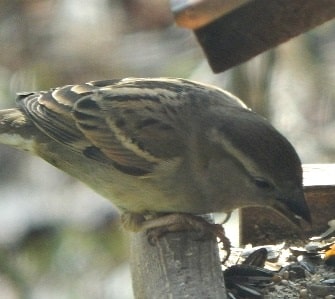
Female House Sparrow
Female House Sparrows have plainer plumage with no streaking on their underside. Their coloration tends to be darker and more uniform, with a grayish-brown chest and belly.
A distinguishing feature of female House Sparrows is their light brown eye stripe, which runs from the beak to the back of the head, adding definition to their face.
Their lack of streaking and darker tones often differentiate them from their streaked finch counterparts.
Beak Differences: Shape and Color
If plumage doesn't give it away, look at the bird's beak. This feature can reliably differentiate the two species:
- House Finch Beaks: Large and slightly curved, these grayish beaks are perfect for cracking seeds and fruits.
- House Sparrow Beaks: Smaller and more conical, House Sparrow beaks are black during the breeding season for males and yellowish for non-breeding males and females.
Color Patterns: Plumage Comparisons
When comparing overall coloring, House Sparrows appear darker with bold, blocky patterns. Their backs and wings are rich brown with black accents, giving them a clean look.
In contrast, House Finches have streaking across their flanks and belly, giving them a more mottled appearance.
Both males and females of this species display this feature, which is a helpful clue for identification.
Behavior and Habitat Preferences
Both species thrive in urban, suburban, and rural areas, but their behaviors can help you tell them apart:
- House Sparrows: Aggressive feeders that forage near people, scavenging crumbs or scraps. They often nest in buildings or crevices.
- House Finches: Less aggressive and more likely to feed on seeds or fruits. They typically flock around bird feeders and nest in trees or shrubs.
Nesting Behaviors
Identifying the nesting habits of House Sparrows and House Finches can provide valuable insights into their species.
House Sparrows construct large, bulky nests using grasses, strings, and various man-made materials. These nests are typically placed in nooks and openings within buildings or bird houses.
In contrast, House Finches build compact nests that measure about 4 inches wide and an inch and a half deep. They prefer to nest in low shrubs, small trees, door wreaths, and hanging plants.
I've personally used an artificial Barn Swallow nest made from wood and placed under the eave of my house that House Finches nest in every season.
Calls - Song
There is probably not better way to tell these two species of birds apart if you can hear their calls.
The finches song is just that. It is the sound of what everybody thinks of when they speak of hearing the birds sing. It's a warble that shifts between high and low notes.
The House Sparrow on the other hand is more of a cheep-cheep call.
Summary: Key Differences at a Glance
| Feature | House Finch | House Sparrow |
|---|---|---|
| Male Coloring | Red face, breast, and rump | Gray crown, black bib, whitish cheeks |
| Female Coloring | Brown with streaked belly and flanks | Plain brown with no streaking |
| Beak | Large, curved, grayish | Small, conical, black or yellow |
| Plumage Patterns | Light browns with heavy streaking | Darker browns with blocky patterns |
| Behavior | Feeds on seeds; less aggressive | Aggressive forager; eats human scraps |
By focusing on these key distinctions, you can confidently identify what birds are visiting your feeder.
Both species are remarkable examples of how wildlife adapts to human environments, and each has its own unique charm.
If you're finding other similar species, a good bird guide will go a long way in helping you identify the birds in in your backyard.
If you're just beginning, purchase a field guide of the birds in your state.
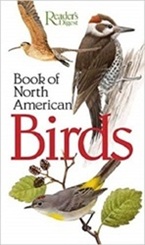
|
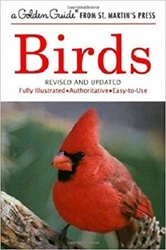
|
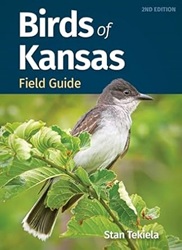
|

|
| Readers Digest Guide | Golden Guide | Your State Only | Nat-Geo Guide |

